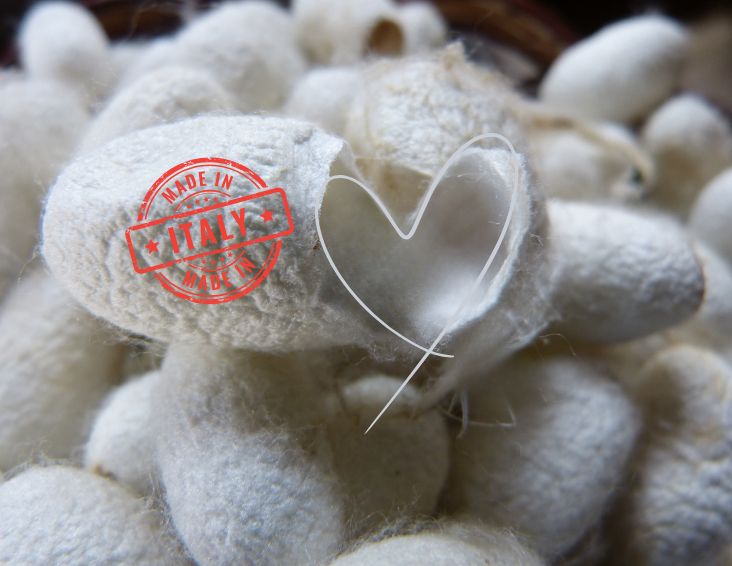The 3D bioprinting market reached $1,647.4 million just last year, driven by technological innovations that have characterized the way we conceive regenerative medicine. At the center of this transformation is an unexpected protagonist: silk fibroin, which is making incredible leaps forward as the bioink of the future.
Digital light processing and molecular precision
The real breakthrough lies not only in the ability to print tissues, but in the precision with which we can now control every single aspect of the process. The development of compatible and precisely printable bioinks responds to the growing demand for three-dimensional bioprinting applications in the field of tissue engineering. Photopolymerizable methacrylated fibroin represents the culmination of this evolution, allowing researchers to create three-dimensional structures with a resolution that seemed like science fiction just a few years ago.
What makes this technology so revolutionary is its ability to overcome the traditional limitations of bioprinting. Silk fibroin is a natural protein that has shown great promise for tissue engineering but is not printable due to slow gelification or aggressive gelification conditions that are not compatible with cells. The recently developed two-phase gelification process uses alginate as a sacrificial material, opening up previously unthinkable possibilities.
Advanced biocompatibility
While the world of regenerative medicine moves toward increasingly personalized solutions, fibroin stands out for unique characteristics that make it superior to traditional synthetic materials. Its natural origin is not just a matter of sustainability, but represents a fundamental competitive advantage in terms of biocompatibility and tissue integration.
Scaffolds in tissue engineering are generally employed as support to improve the proliferation and differentiation of cells seeded on the support or for in vivo colonization when implanted. Fibroin does not limit itself to acting as a passive support, but actively interacts with host cells, promoting biological processes that accelerate tissue regeneration. This characteristic is particularly evident in vascular engineering applications, where structural precision must go hand in hand with biological functionality.
Italian excellence in the sector
Italy is the world's leading silk importer with $322 million, a position that reveals not only a long tradition in the sector, but also an industrial and research infrastructure perfectly positioned to capitalize on the bioprinting revolution. The European silk market is projected to reach $6.02 billion by 2033 from $3.65 billion at the end of this year, with an annual growth of 6.45%.
The Italian textile market, valued at $25.67 billion in 2024, is projected to grow with a CAGR of 3.3%, reaching $34.29 billion by 2034. These numbers don't just tell a story of growth, but outline a unique strategic opportunity for Italy to become a world leader in fibroin production for advanced biomedical applications.
Made in Italy in the fibroin bioprinting sector is not just a matter of branding, but represents a complete ecosystem that ranges from excellence in university research to industrial production capacity. Italian companies are already investing massively in this direction, creating strategic partnerships between universities, research centers, and biotechnology industry.
Toward industrialization
The global silk fibroin market was $0.1 billion in 2023 and is expected to reach $0.19 billion by 2032, with a CAGR of 6.6%. These apparently modest numbers hide a much more complex and promising reality. Fibroin for bioprinting represents an ultra-specialized and high-value-added segment, where quality and technological innovation matter more than pure volume.
The industrialization of this sector requires a completely different approach compared to traditional textile production. We are talking about processes that must respect pharmaceutical standards, where every batch must be traceable and reproducible with molecular precision. The rapid development of 3D bioprinting has enabled its wide application in the fabrication of scaffolds for bone tissue engineering, based on three-dimensional computer models and specialized bio-inks.
Emerging applications and vertical markets
The true revolution of fibroin in bioprinting manifests itself through applications that until a few years ago were relegated to science fiction novels. We are witnessing the development of increasingly complex artificial organs, where fibroin is not just a support material, but becomes an integral part of the biological functionality of the organ itself.
In the cartilage engineering sector, fibroin printed with Digital Light Processing technology is demonstrating regenerative capabilities that far exceed traditional synthetic materials. Applications in ophthalmology, where structural precision is fundamental, are opening completely new and extremely high-value-added markets.
Italy, with its unique combination of silk tradition, excellence in biomedical research, and precision industrial capacity, finds itself in an ideal position to become the European hub of this technological revolution. We are not just talking about production, but about a complete ecosystem that includes research, development, production, and commercialization of cutting-edge technologies.
Fibroin for bioprinting represents the perfect example of how innovation can transform traditional sectors into industries of the future. While the world prepares for this revolution, Italy has all the tools to lead it, transforming a millennial tradition into a competitive advantage for the 21st century. The future of regenerative medicine is being written today, and the pen is Italian.


